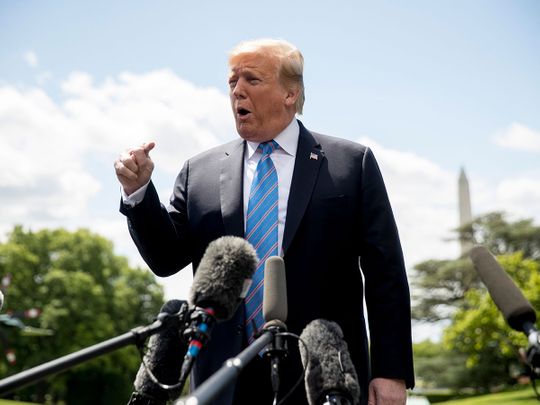
Many politicians have some attributes and characteristics besides being leaders. The US President Donald Trump has both.
Besides being president of the world’s most powerful nation, which sets the course of many global developments, especially in the economic domain, he is also a businessman who has utilised and harnessed his business experience to manage the country’s economic affairs. And even in the US’s economic and trade relationship with others.
Although Trump has many political views, we will focus on his economic vision as a president and businessman. He has been able to achieve significant economic gains, by running the US as a company based on a profit-and-loss system and with some pragmatism, which makes him different from previous presidents.
Trump’s policy did not exclude any country or bloc. Nato members had to pay billions of extra dollars to increase their contributions to defence spending to try and match the US allocation as a percentage of gross domestic product (GDP). Trump thinks he was right in taking this move.
Nato countries have been militarily dependent on Washington. At the same time, they contribute to funding Nato projects at a much lower percentage of GDP, which has gone on for decades. This applies to Japan and South Korea as well, which have increased their military spending to bear more of the costs the US used to spend in Asia.
As for Washington’s trade relations with major partners, they have been fundamentally restructured, making priceless gains for the US. China, the US’ largest trading partner, did reduce some tariffs on US imports, following President Trump’s decision to impose additional tariffs of more than $200 billion (Dh734.6 billion) on US imports from China. Yes, China also slapped tariffs on $60 billion on its US imports effective from June 1, which will set the two countries and the world in a trade war.
On top of that, Trump demands taking even more action. More importantly, China has, under pressure, taken measures to protect intellectual property and restrict leakage of US technology to its markets, which was costing US institutions heavy losses, as Trump believes.
The US president has also reshaped trade deals with Canada and Mexico, which he believed were unfair to his country. He also plans to impose an additional $11 billion on US imports from EU countries if the EU did not review subsidies to their institutions.
These measures have contributed to supporting the US economy and providing new sources of financing, investment opportunities and additional jobs, leaving a net positive impact on the economy, as evidenced by the results in the two years since Trump assumed power.
These include growth rates of 3 per cent per annum, which increased to 4.1 per cent in the first quarter of last year. Millions of jobs have been created and leading to a decrease in the unemployment rate to 3.6 per cent, the lowest in 50 years. In April alone, more than 263,000 jobs were created, with inflation falling to 2 per cent due to the resilience of the economy.
Thanks to restrictions on technology leakage from intellectual property infringement, Trump’s policy will lead to the return of tens of billions of dollars, which were generated by US companies’ tech advances that helped some countries produce global brands built on US technology.
Obviously, Trump is restructuring not only his country’s economic and trade relationship with main partners, but also that with the rest of the world, through which he is trying to make further gains from his point of view.











